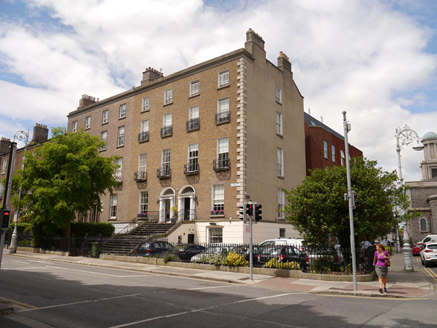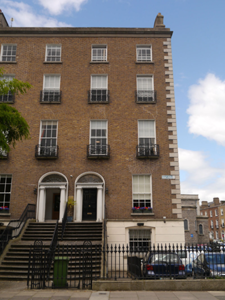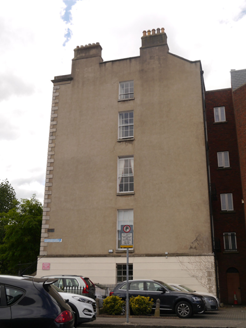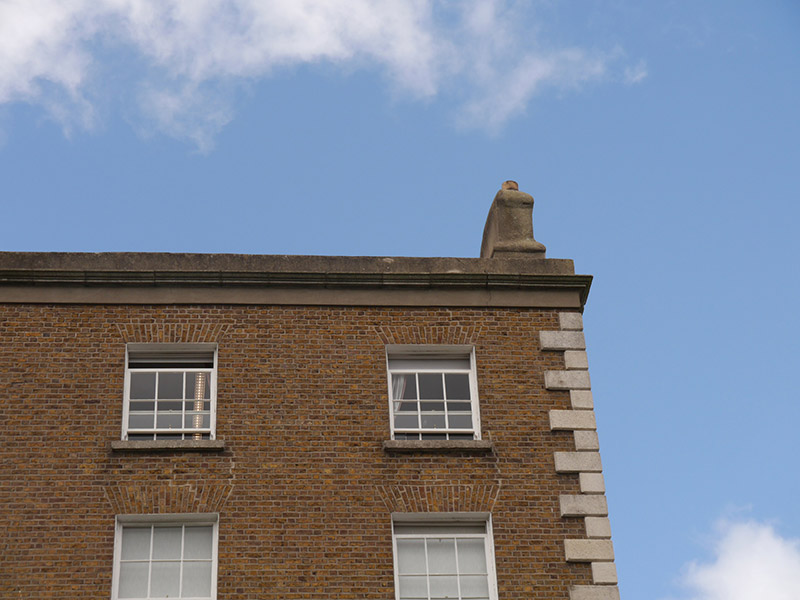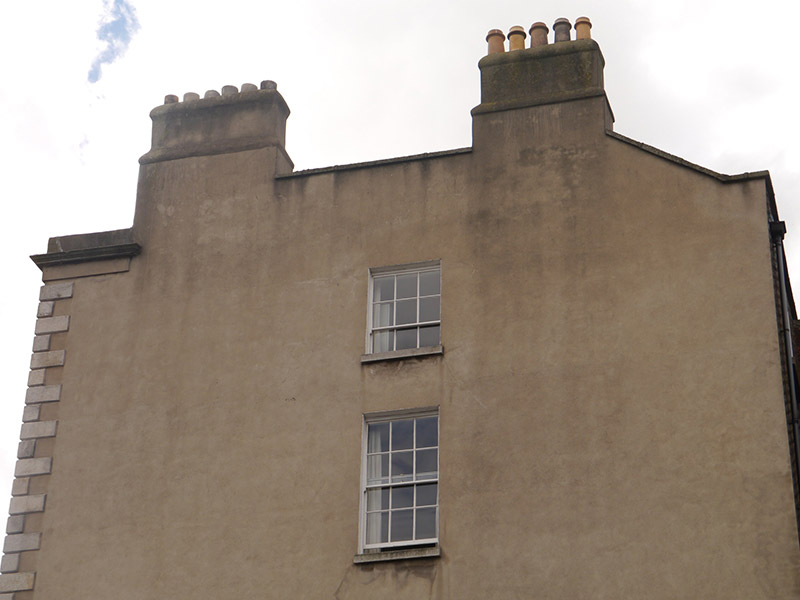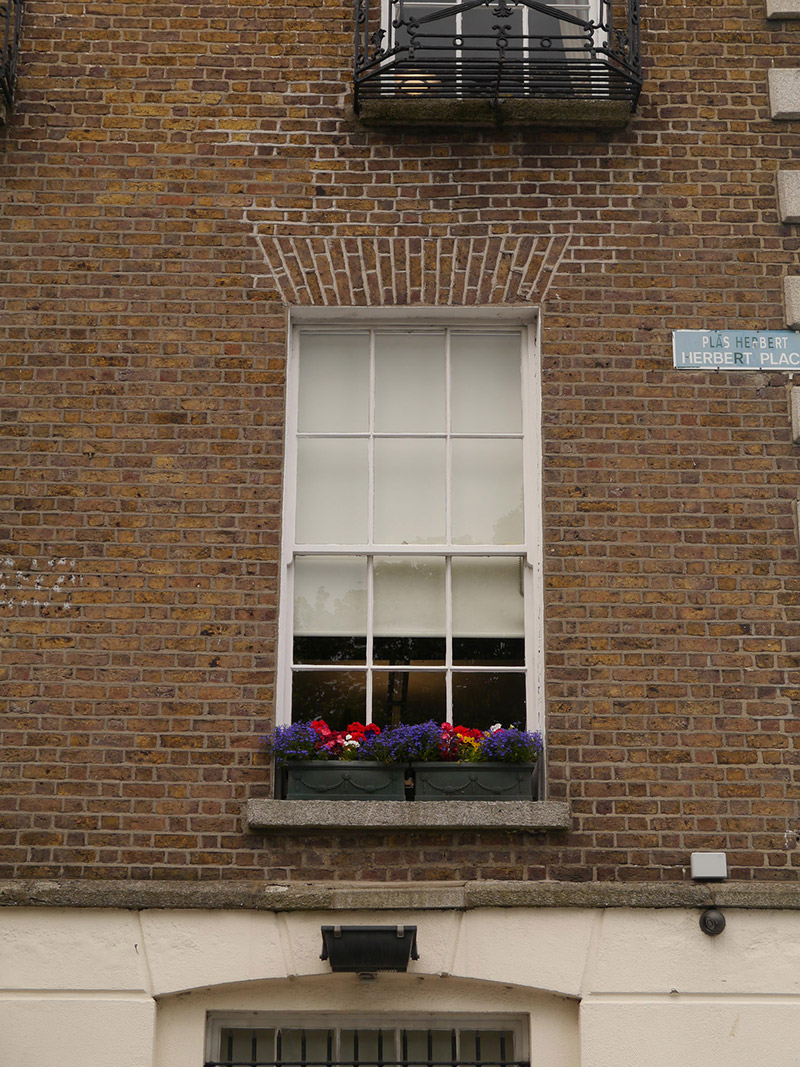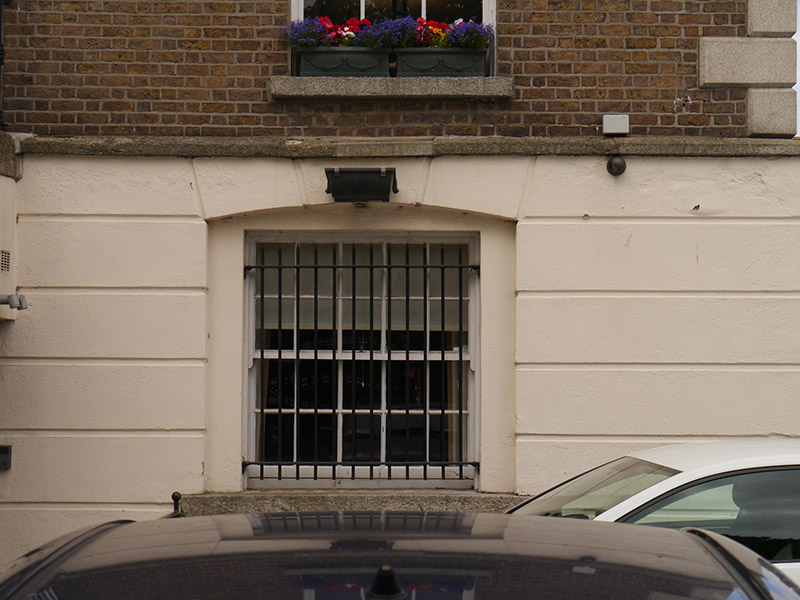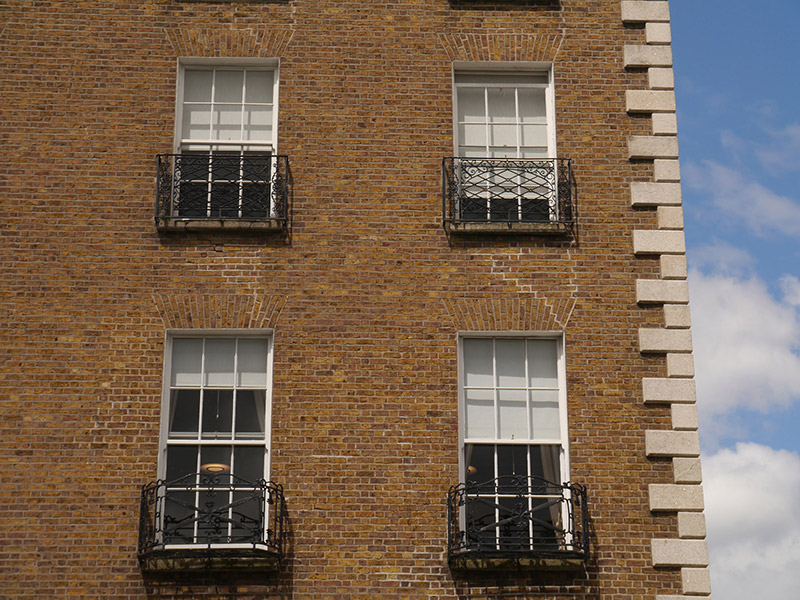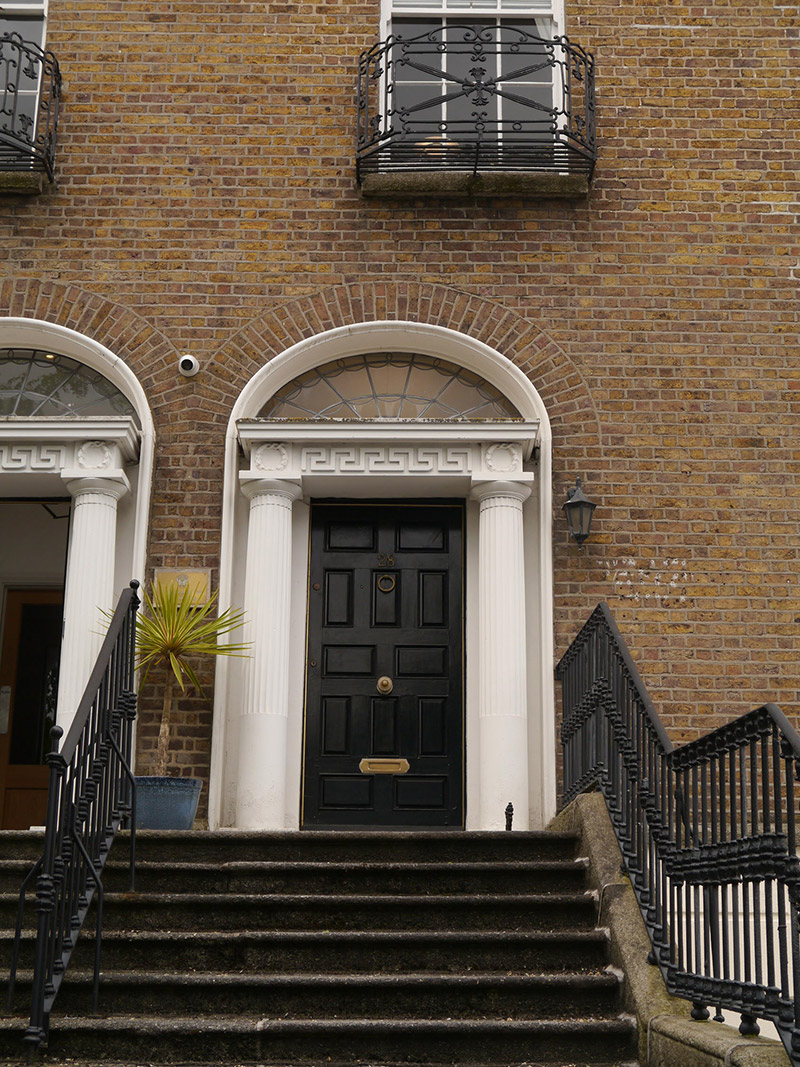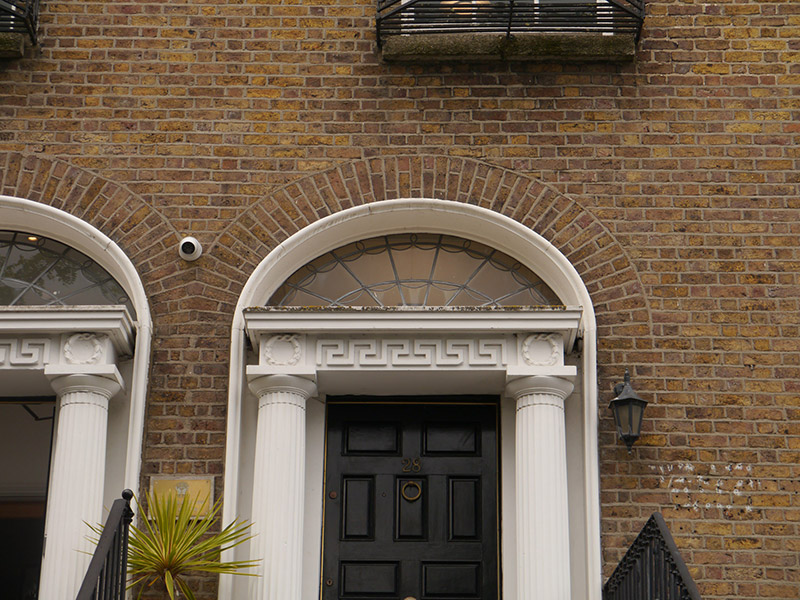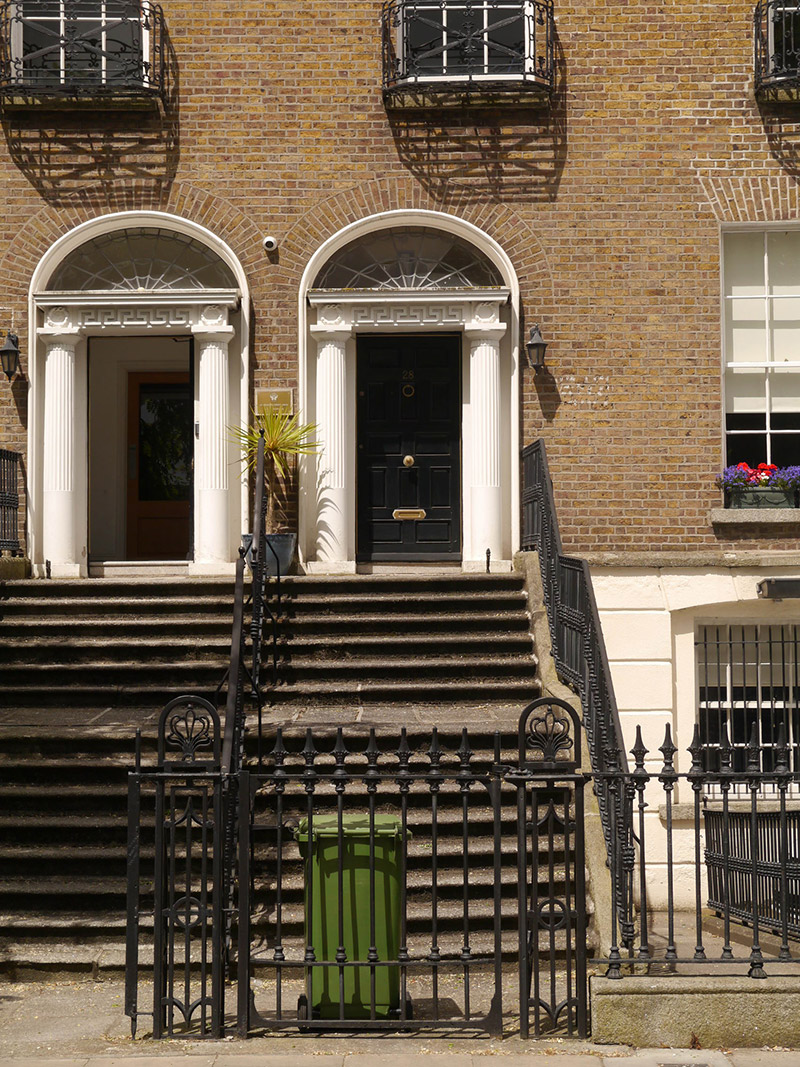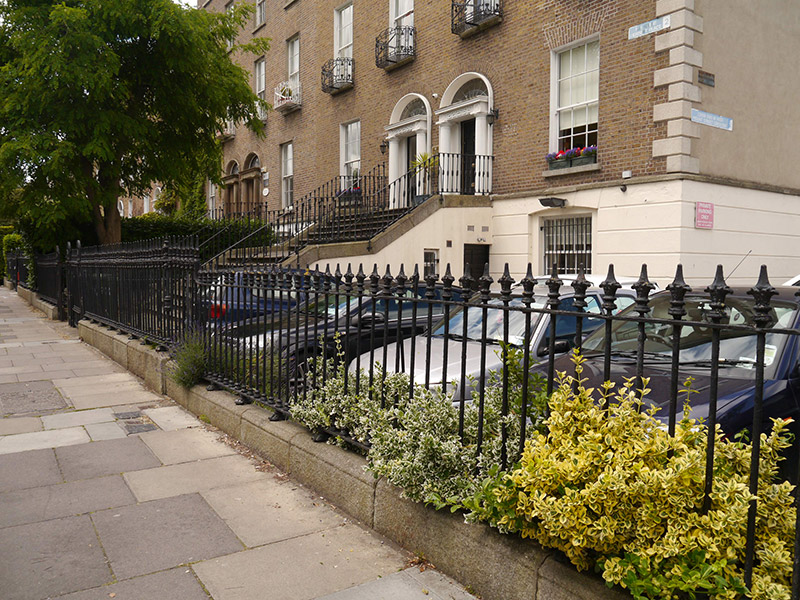Survey Data
Reg No
50100665
Rating
Regional
Categories of Special Interest
Architectural, Artistic
Original Use
House
In Use As
Office
Date
1830 - 1840
Coordinates
317086, 233196
Date Recorded
21/06/2016
Date Updated
--/--/--
Description
Corner-sited two-bay four-storey former house over raised basement, built c. 1835 as one of terrace of four (Nos. 25-28), with recent five-storey office block attached to rear. Now in office use. M-profile roof, hipped to south end, having terracotta ridge tiles, brick parapet with moulded granite coping, ashlar platband and granite blocking course. Shouldered brick chimneystacks to north gable with terracotta pots. Concealed rainwater goods, and replacement uPVC downpipe to rear. Flemish bond buff brick walling (of same shade as No. 27) to upper floors with rusticated granite quoins to northeast corner, on granite plinth course over painted rusticated rendered basement walling; smooth rendered walling to north elevation. Square-headed window openings, diminishing in height to upper floor, with painted rendered reveals and granite sills; rendered surrounds to basement openings, set in segmental-headed recess to front elevation. Timber sliding sash windows with convex horns, six-over-three pane to top floor, ten-over-ten pane to basement and six-over-six pane elsewhere; rear elevation as per front and side, but with some Wyatt-style windows to ground and first floors, and eight-over-eight pane windows to basement level. Decorative cast-iron balconettes to first and second floors of front and rear elevations, and wrought-iron grilles to basement. Round-headed doorway with painted moulded surround and stone doorcase comprising half-fluted Doric columns, entablature with laurel wreaths to keyed frieze, decorative leaded fanlight and replacement twelve-panel timber door with brass furniture. Shared granite entrance platform with decorative cast-iron boot-scrape and two stages of six and eight bull-nosed granite steps flanked by decorative cast-iron railings on moulded granite plinth. Plain square-headed door and diminutive window opening beneath entrance platform. Decorative spear-headed cast-iron railings on moulded granite plinth to street, with matching pedestrian gate on round-headed cast-iron openwork piers. Steel gate to rear of plot on Herbert Lane.
Appraisal
No. 28 Herbert Place stands on a prominent corner site, forming part of a late Georgian terrace of twenty-five buff brick houses, set well back from the Grand Canal and above high exposed basements. This group of four houses (Nos. 25-28), a storey taller than the rest of the terrace, is thought have been constructed slightly later. They retain notable Greek Revival doorcases, decorative fanlights, rusticated treatment at basement level and cohesive ironwork setting features. Originally built as a southern continuation of Warrington Place, this stretch was renamed following the accession of Sidney Herbert to his father's estates in 1827. The historic form and architectural character of the terrace is largely well retained. Although many of the mews buildings have been modernized, the overall form of the group remains, with some rubble stone examples still intact, although that to the rear of Nos. 27-28 has been removed and replaced with a substantial modern block.
